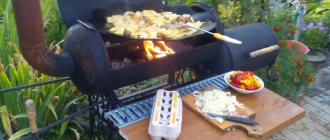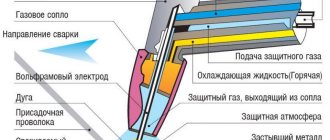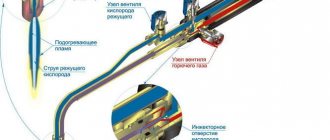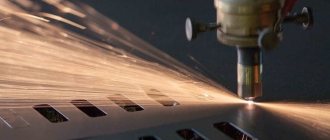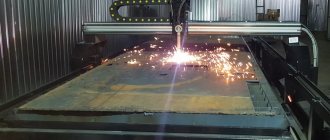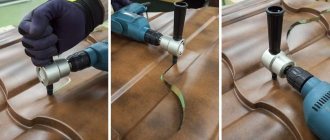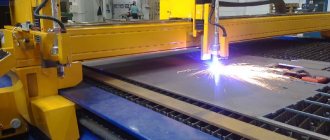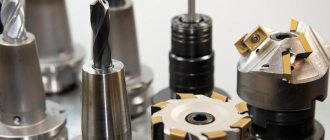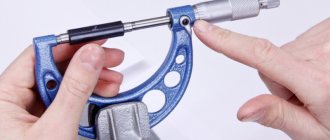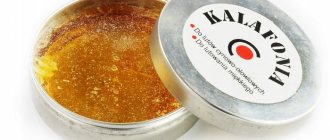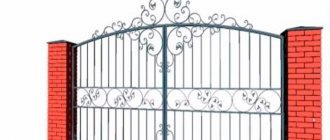Updated: 04/22/2021 16:52:38
Expert: Andrey Nikolaevich Kuznetsov
*Review of the best according to the editors of expertology.ru. About the selection criteria. This material is subjective in nature, does not constitute advertising and does not serve as a purchase guide. Before purchasing, consultation with a specialist is required.
When it is necessary to cut metal in large volumes without high precision, oxygen cutters are used. Unlike a grinder, you can draw a cutting line not only straight, but arbitrarily. The cutting speed is also much higher here, and the cost of the process is lower. To help you choose the right tool, we offer a number of practical tips from experts. What follows is a review of eight models that are most popular among welders and cutters and have received many positive reviews.
Principle of operation
Metal cutting occurs due to its melting under the influence of a directed stream of oxygen on the line of the intended cut. After melting, the same jet blows out the oxides formed in the cut zone.
The use of gas cutters is effective in the following cases:
- If it is necessary to cut metal structures before subsequent melting during the sorting process.
- To correct defects formed during welding work.
- To eliminate the consequences of accidents.
- In foundry production to correct external defects on finished ingots.
- In metallurgy for cutting metal sheets and rolled products before installing metal structures.
- If necessary, preparation work before welding.
- When dismantling steel structures.
Cutting nuances
The cutting process involves speed control, the selection of parameters occurs visually, depending on the number of sparks and their scattering. The stream of sparks generated by the cutting process must be generated at an angle of 90° with respect to the surface. The speed is adjusted if the flow changes direction, in this case the speed is low, requires adjustment.
The thickness of the structure affects the process; in the case of a processed sheet with a thickness of more than 6 cm, it must be placed at a slight angle to allow the slag to drain off. When processing thick products, it is important to maintain an inclination angle of 15 ° more and control the speed. If cutting is stopped in the middle of the path, the process does not resume at this point, but occurs all over again. To avoid rework when working with a thick product, it is necessary to guide the cutter so that the metal is processed along the entire perimeter.
Cutting metal with a gas cutter
After cutting the steel, the supply of cutting gas is turned off. Then the valve on the cylinder is closed, the last step is to close the supply of the combustible mixture.
Construction of gas cutters
The cutting torch consists of the following parts:
- Trunk.
- Tip.
- Handles equipped with nipples for connecting gas and oxygen hoses.
- Housings with valves designed to regulate the supply of gas and oxygen.
- Injector.
- Mixing chamber.
- A tube designed to supply oxygen and a combustible mixture.
- A connecting nut that serves to secure the barrel to the body of the device.
During operation of the device, gas is directed through hoses into the product body through nipples. In this case, the combustible gas must flow in a single-flow mode towards the western valve, and the oxygen must diverge into two streams, one of which is directed to the heating valve, and the second to the cutting oxygen valve located outside the handle.
When the oxygen preheating valve is open, gas under pressure is directed into the main injection hole. Discharged flammable gas is supplied to it through a series of peripheral holes.
Once the gases are mixed, they are directed to the mouthpieces through the lower tube of the handpiece.
IMPORTANT! When working with gas equipment, it is strictly prohibited:
- blow oxygen through the propane hose;
- change sleeves with each other.
Oxygen and heating gas are supplied to the tip head, which is removed from the annular gap. After the flame appears, the jet is directed to the site of the intended cut, after which the gas jet burns the metal and removes the by-product in the form of oxide.
To make cutting, the head of the device with the cutting jet is held at a certain distance from the workpiece, after which a narrow slot remains in the processed area, limited by the lateral and frontal planes.
The maximum flame temperature produced by gas cutters running on propane is 2800 degrees. For devices running on acetylene fuel, this figure is 3100 degrees.
Device and design features
An oxy-fuel cutter is used to mix a mixture based on fuel (acetylene, propane) and cutting gases (oxygen) to produce a cutting jet.
Structurally, a gas cutter for cutting metal consists of the following elements:
- special head with two replaceable mouthpieces;
- tubes for supplying oxygen and gas;
- mixing chamber for forming a mixture of fuel and cutting gases;
- 3 valves – for flammable gas, supply and regulation of the amount of oxygen supplied;
- lever.
These are the main components of an oxy-fuel cutting tool as there are many other parts to its design.
Figure 1. Diagram of an oxy-fuel torch
Types of gas cutters
Gas cutting equipment is traditionally qualified according to various criteria, but the main ones include the type of combustible material used and the characteristics of mixing gas with oxygen. Also, cutters can be divided according to purpose (specialized and universal), as well as the type of cut produced (separation, surface and oxygen-flux).
Injection
Injection-type devices operate on the principle of intra-nozzle mixing of working gases. This design allows for high reliability and safety of the mechanisms. This is due to the fact that flammable gas and oxygen are supplied to the nozzle through separate channels and mixed in a special mixing chamber immediately before supply.
Injectorless
Injectorless cutters do not have a special chamber for mixing gases. Oxygen is supplied to the nozzle through two channels, flammable gas through a third. The substances are mixed only inside the cutter head. Devices of this type require higher gas pressure to operate effectively compared to injection devices.
conclusions
Using automatic cutting machines does not always mean purchasing expensive CNC machines.
Many straight-cutting or hole-cutting tasks can be accomplished with compact, portable gas cutting machines, saving time to use gantry machines for more complex tasks. The use of portable gas cutting machines is not limited to workshop conditions; due to their light weight, compactness and reliability, they can be used in installation environments, in open areas and at metal depots. At its core, a portable machine is a compact, powered carriage for moving one or more cutting torches at a controlled speed. By using two cutters and a special device for sharpening cuts, you can immediately form an X and Y groove for welding. The reach, height and angle of the cutter are adjustable. The circular device will allow you to cut holes of a given radius. The cutting quality is ensured by the precision of the movement speed adjustment and the installed machine cutter. By purchasing portable gas cutting machines manufactured by Messer, you get the quality of cutting a gantry machine at an affordable price. All Messer machines are equipped with safety devices and ensure the highest level of human safety and guarantee the safety of equipment. The machines are equipped with machine cutters for all types of flammable gases with different rod lengths. In addition to portable machines, we recommend purchasing components such as gearboxes, hoses, and connection point protection devices.
The choice of a portable gas cutting machine is complicated by a large assortment of Chinese-made machines with a very attractive price. We ask you not to delude yourself and understand that the low price is due solely to savings on everything - on the drive, on the quality of the cutter, on the body, on the silumin brackets of the torch holder, on the thermal insulation of the carriage body. If you want to get safe, reliable and high-quality equipment that will serve you for many years, contact the specialists of ITS-Engineering and we will select the optimal solution for you. Portable machines QUICKY-E and PORTACUT are very popular, and therefore we always maintain a certain stock of these models, as well as consumable parts for machine cutters and necessary accessories. We can confidently recommend Messer portable gas cutting machines for purchase both for large industrial enterprises that already have CNC portal machines, and for small metalworking industries and workshops.
Classification according to the combustible gas used
Propane
Propane gas cutters are ideal for processing cast iron pipes and other products made from ferrous and non-ferrous metals. Propane gas cutters are rightfully considered the most reliable and safe and at the same time are able to provide maximum work productivity.
Acetylene
Acetylene gas cutters are used for cutting sheet metal and large parts. Such devices must be equipped with a special valve that regulates the speed and power of oxygen supply to the work area.
Universal
Universal injection-type gas cutters are the most in demand today. These devices allow you to use the power of the working gas if the pressure inside the housing is from 0.03 to 1.5 kgf/square centimeter. The universal cutter is simple and easy to use, has relatively small dimensions and is capable of cutting metal products in different directions. With its help, you can effectively process metal with a thickness of 3 to 300 mm in thickness.
Instructions for use
The cutting technology involves initially setting the ratio of oxygen and propane at 1 to 10 – i.e. at an oxygen pressure of 6 atm. The flammable gas pressure is set to 0.6 atm.
Opening and closing the gas supply is carried out in a strict sequence:
- The oxygen and flammable gas valves open 0.5 turns (strictly in that order).
- The flammable mixture is ignited.
- The torch is brought to the metal being cut and by opening the valve, the supply of oxygen is added until a cutting jet appears.
- After completion of the work, the supply of flammable gas is initially shut off, and then oxygen.
Figure 7. Scheme of the process of oxygen cutting of metal
The cutting technique after igniting the torch involves the need to heat up the metal area in the cutting area. If the heated area becomes red, the oxygen supply can be increased a little more. After completely cutting through the workpiece, the torch moves along the cutting line. The speed of movement of the cutter depends on the thickness of the rolled metal being cut, the operating characteristics of the process, and therefore is determined individually.
The following video shows how to properly use a gas cutter:
Pros and cons of gas cutters
The advantages of gas cutters include:
- The ability to effectively process metal with a thickness of up to 300 mm (depending on the modification and operating parameters of the equipment).
- Combustion stability of the exiting flame. The mixture is burned without popping or backfire.
- Ability to work with metal in any direction.
- Efficiency.
- High performance.
- Convenience and ease of equipment maintenance.
- Low cost of devices and components.
The disadvantages include:
- The likelihood of thermal deformation of the material.
- The need to refine the edges formed as a result of the cut.
- High risk of fire.
- Large cutting width, which makes it necessary to maintain allowances when carrying out marking work.
- Cannot be used with stainless steel.
- When working with thick metals, the taper of the cut becomes noticeable.
Tips from experts on working with a cutter
Experienced carvers advise always using high-quality personal protective equipment:
- special glasses;
- gloves (mittens), jacket and pants with fire-resistant properties;
- special work shoes.
The workplace must also be properly equipped. The location of gas cylinders is at a distance of 5 m from hot work. The workshop should be well ventilated, the floor should be concrete or earthen. The flame of the gas-oxygen burner should be located frontally relative to the gas supply hoses. Hoses must not interfere with work.
It is also important to have auxiliary tools and devices for marking work - pencil (chalk), tape measure, square, ruler. To ignite the flame, you will need a special lighter, which the carver should always have at hand.
At the end of the work, you need to carefully inspect the workplace so as not to accidentally step on a piece of molten metal, which can burn through even the thick sole of your shoes. The cut metal blanks are usually left to cool in natural conditions, but if necessary, forced cooling with water is allowed - this must be done carefully so that hot splashes do not get on the skin.
How to choose the right cutter?
To avoid mistakes when choosing a gas cutter, you need to carefully study the design features of the devices. This will allow you to make a choice and understand which factors are key.
When choosing, you must follow the following rules:
- Models with nipples made of brass and aluminum are more preferable, since their service life is much longer than the service life of parts made of other alloys.
- The cutter mouthpiece should be made of copper or chromium bronze. When it comes to choosing an acetylene-type cutting torch, you should pay attention to the fact that the internal mouthpiece is also made of copper. For other types of devices, it is permissible to use analogues made of brass.
- Connecting tubes must be made of brass. It is extremely important that the parts are not coated with decorative materials, since such a coating can hide minor defects, due to which the service life of the device will be significantly reduced.
- Torch valve spindles should be made of stainless steel. Analogs made from other alloys have a short service life.
- The cutter handle should be made of aluminum; devices with plastic holders are subject to deformation. The handle size should not be less than 40 mm.
- It is also important to pay attention to the maximum thickness of the metal for cutting. Depending on the goals of the buyer, you can choose devices with the ability to cut up to 300 mm.
Recommended products
Article: 053-93143
Necessary equipment
To perform various steel processing tasks, it is necessary to prepare equipment and appropriate tools. Operation is carried out using:
- oxygen and propane cylinders;
- cutting tool;
- mouthpiece of a certain size;
- hoses.
Safety precautions require the presence of a control valve on each cylinder. The propane cylinder has a reverse thread, so installing an additional reducer is impossible. The equipment has similar designs, both for home use and for industrial purposes. Before cutting metal, it is necessary to check the functionality and presence of all adjustment elements.
Hoses for oxy-propane cutter
The supply of ozone is marked in blue; the valves are located both directly on the cylinder and on the cutter. The propane stream is marked like all other gases and explosive substances, in red or yellow.
After connecting the torch, a process begins in which oxygen and propane merge in the mixing chamber, resulting in the formation of a flammable mixture. The design provides for the replacement of units for scheduled repairs and maintenance; if one of the units fails, it is possible to replace it and continue working. The mouthpiece is selected depending on the type of tasks performed, has different indications and differs in numbers.
Review of popular gas cutters
The cost of gas cutters depends on the following factors:
- The country in which the device was manufactured.
- His type.
- Areas of application.
- Technical characteristics.
- Productivity.
- Brand popularity.
- Parameters
The most expensive are gas cutters made in South Korea and the USA. Their cost is due to the high quality of the products, as well as the long-term warranty provided by the manufacturers.
The cheapest are devices made in China.
Valve cutter R1P-100, KRASS
The cost of such a device is 1,580 rubles. This cutter is designed to work in manual mode with sheet and long metal made from low-carbon steels. Depending on the chosen mouthpiece, such a cutter is capable of cutting sheets with a thickness of 3 to 100 mm. The length of the cutter is only 480 mm, and the weight is 640 grams.
Propane cutter NORD-S, standard (valve)
Its cost is 4100 rubles. This is a manual gas cutter, characterized by increased reliability. It is designed for separation oxygen cutting of low-carbon and low-alloy steels, the thickness of which ranges from 3 to 300 mm. The design of the device eliminates the possibility of kickbacks.
Propane cutter R3P-02M LATION
The cost of the device is 1670 rubles. Can be used for manual cutting of metal products, as well as heating and cutting parts made from sheet and rolled ferrous metals. The gas cutter of this model allows you to make a narrow and neat cut without deforming the product.
Propane cutter NORD-S, long (valve)
The cost of the product is 4100 rubles. The model is designed for separation oxygen cutting of low-carbon and low-alloy steels, the thickness of which ranges from 3 to 300 mm. The model has increased reliability indicators and is convenient to use.
Advantages and disadvantages
The gas burner is designed for cutting products in production conditions, with a large volume of tasks. Before using the device, it is important to understand what key features metal cutting with propane and oxygen has:
- The mechanism of action is convenient when making curved cutting lines. Stable power allows you to separate metal products of various thicknesses into parts. In situations where it is impossible to use a tool such as an angle grinder, a gas torch is used. The task of making a round product or a blind hole is performed with a gas torch without requiring much effort.
- A gas cutter has an advantage over gasoline models. In addition to being lightweight, the mechanism does not produce excessive noise during operation and is also compact.
- The use of a device based on the influence of flammable gas makes it possible to double the speed of execution, which is beyond the power of mechanical tools.
- Propane, as a liquid gas, has a low price. Therefore, it is used not only when processing products for production needs, but also when recycling metal and other activities.
- The use of propane as a flammable mixture allows for high-quality cutting. Cutting is carried out along a narrow line, which is the main factor in quality work.
The disadvantages are that some materials cannot be processed with a propane cutter, such as cast iron and high-alloy steels.
Homemade for household needs
If it is necessary to carry out a small amount of work related to cutting thin sheets of metal (thickness within 1.0 mm) or melting copper wires, home craftsmen are able to make a compact portable gas cutter of simple design with their own hands. The cutter diagram is shown in Fig. below
Diagram of a homemade gas cutter.
To make such a simple product you need:
- dropper;
- needle for inflating nipple soccer balls;
- gas cartridge used in lighters;
- aquarium air compressor or plastic bottle.
The sequence of manufacturing a mini-cutter is as follows:
- A cut is made on the nipple ball needle.
- The needle from the dropper is bent at an angle of 45 degrees. And a ball needle is inserted into the incision.
- Both needles are tied together with wire, then the wire tie is fixed with solder.
- Dropper tubes are placed on the ends of the needles, acting as gas hoses.
- The protruding end of the dropper needle acts as a nozzle.
- The air supply will be provided by an aquarium compressor or a plastic bottle slightly modified to match an external air source (tube, tire, etc.).
- Gas will be supplied from a gas cartridge.
- To regulate the outlet gas and adjust the flame, dropper limiters are used, acting as valves.
With proper flame adjustment, the temperature can exceed 1200-1300 degrees. C. Users of this mini-cutter claim that it can successfully serve for several years.
Overall size and weight
The parameters of a manual injection gas cutter will be contained in GOST 5191−79 standards and will directly depend on its power indicator:
- P1 has about 500 millimeters.
- For P2 and P3 they are within a certain limit of 580 millimeters. But more extended models are also being produced to carry out work in appropriate conditions.
- There are special restrictions on the weight of any such power category: 1.0 and 1.3 kilograms in the ratio for P1 and P2-P3.
The same standards from GOST will determine that the P3 variety is an oxygen-propane cutter, and also P1 and P2 can perform work on absolutely any type of combustible gas. There is also a separate group of manual injection tools for oxygen cutting - insert cutters, which have a special marking PB.
According to GOST standards, they will be defined as tips for cutting on a welding torch. The main differences in such designs are that the process of separating oxygen, as well as a mixed type of combustible mixture, will occur on the tips themselves, which have a smaller weight and size than the cutter. So the weight indicator of PB1 has a special upper limit of 0.6 kilograms, and PB2 and PB3 are about 0.7 kilograms.
But this type of gas cutter cannot be called complete in terms of its metal - in the working position during the assembly process with the main body of the burner, its overall size and weight will be no less than that of special equipment. Its main advantage is that you can purchase a torch together with various types of tips (cutting and welding), and the complete complex can be easily placed in a small case. Or buy a portable backpack specially designed for the burner.
But in this case there is one peculiarity. Propane will be much cheaper in cost than acetylene. It is for this reason that the cost of using an acetylene torch will be much higher than an oxypropane torch. To weld metal, it is better to use an acetylene torch, whose total flame temperature will be as much as 300-400 degrees higher than that of an oxygen- propane torch (with an all-propane torch the total temperature will be less than 2 thousand degrees Celsius).
The compactness of the entire post for manual cutting can be ensured using the capacity of all gas cylinders.
Features of autogenous processing of parts
Flame cutting operations using autogen are classified according to the nature of the cut:
- when dividing cutting, a through cut is made, dividing the workpiece into several parts/parts;
- during surface cutting, a layer of the surface of the workpiece is removed to form channels, slots, splines or other structural areas;
- spear cutting is carried out for the purpose of burning blind or through holes in parts.
If you use equipment for gas-oxygen cutting, sheets and strips with a thickness of more than 3.0 mm are subjected to separation cutting. Cutting workpieces of smaller thickness is accompanied by warping of the cut profile, distorting the configuration of the cut parts.
For cutting thin sheets of ferrous steel and stainless steel with a thickness of 0.5-3.0 mm, it is preferable to use plasma cutting technology using a plasma cutter or laser cutting, which cuts thin sheets using a laser.
In order for the process of metal combustion in a stream of oxygen to proceed continuously, the condition must be met that the melting temperature of the metal of the cut part exceeds the combustion temperature of this material. If this condition is not met, then the metal, before it has time to ignite, will begin to melt and spread.
In this case, the oxygen jet will not be able to efficiently blow out refractory oxides. Steels with a high content of carbon and alloying elements - chromium, manganese and molybdenum - are hardened, increasing their hardness, and crack in the cutting zone.
In this regard, autogen cutting is not recommended for alloy steels, cast iron and non-ferrous metals.
Most low-carbon steels with a carbon content of no more than 0.3% can be gas cut. Already with a carbon content in steel above 0.7%, high-quality gas cutting is difficult.
Portable and Ultraportable
The dimensions of typical gas injection and non-injector cutters are small, but a pair of heavy 40-liter cylinders with oxygen and flammable gas included in the oxy-fuel cutting equipment significantly limit the mobility of the gas cutter. Even to perform a single small cut, the welder is forced to roll a bulky cart with gas cylinders.
The way out is a portable portable propane cutter , equipped with a five-liter oxygen cylinder and a propane cylinder with a capacity of 2, 3 or 5 liters. A set consisting of a cutter, short (up to 5 meters) hoses and two cylinders fits in a plastic container-type suitcase or in a special bag reinforced with metal inserts. This mini gas metal cutter is popular among specialists who repair refrigerators and air conditioners.
If we continue the review of gas cutting equipment according to the degree of its miniaturization, then the next group of gas devices will be collet gas cutters, consisting of a gas cartridge with a capacity of up to 0.5 liters and a torch with a nozzle attached to the cartridge through a collet connection.
The temperature of the top of the flame formed by a narrow cone can reach 1300 degrees. Ts , which allows cutting thin sheets of metal. If the torch is relatively wide, then you can use it to light a fire on the go for cooking or to warm up frozen pipes.
Miniature cutters that are connected to a collet cartridge via a flexible hose can be considered ultraportable. The so-called pocket cutter, commonly called a microtorch and a torch-soldering iron, is used for soldering electrical parts, jewelry, and small copper tubes.
What nuances should you consider when choosing a game?
The rationale for choosing a cutting torch model is influenced by many factors, ranging from what type of cutting is expected to be performed to clarification of how much the cutter costs. On the technical side, the following points must be taken into account:
- the materials of the body and gas tubes should be copper or brass alloys, stainless steel;
- the aluminum handle is more durable than the plastic one;
- brass inlet nipples are preferable to aluminum ones;
- the material of the internal and external nozzle of an acetylene cutter is copper; for oxygen-propane IGR, it is allowed to make the internal nozzle from brass;
- the valves should rotate with little effort, but without jamming;
- It is recommended to choose collapsible designs, since they have higher maintainability and are easier to clean the injector and tip tubes.
In Fig. Below are some external factors that you should pay attention to when inspecting and choosing IGRs
